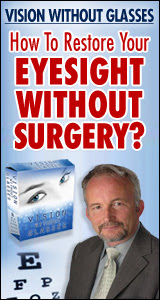 |
| image source |
Richard Wilcox, Ph.D.
Activist Post
“When we remember we are all mad, the mysteries disappear and life stands explained.” – Mark Twain
“In America you have a right to be stupid.” – John Kerry, US Secretary of State (1)
“I live in a contaminated world.” – Hiroaki Koide
“Control of the nuclear fission process is the use of science and technology for political power.” – S. G. Vombatkere (2)
Two years have passed since the Fukushima nuclear disaster. Although Chernobyl was probably the worst nuclear accident in history, in the days just after the March 11, 2011 magnitude 9.03 earthquake and 40.5 meter high tidal wave that smashed Japan, the Fukushima nuclear crisis nearly burst into simultaneous multiple nuclear failures at several power stations in northeastern Japan (3). Had the worst case outcome occurred, one of the world’s largest cities, Tokyo, would have been rendered a highly contaminated radiation zone and 35 million people would have been forced to evacuate. The logistics of that scenario are hard to imagine, yet the Japanese prime minister at the time, Naoto Kan, seriously considered the possibility.
There is now the beginnings of a small but growing consensus of the gravity of the Fukushima nuclear situation. What happened, what could have happened, what need not have happened, and what is still to come.
Caldicott Versus The Nuclear Industry
“The Medical and Ecological Consequences of the Fukushima Nuclear Accident,” a two-day conference is now posted online (4). Held at the New York Academy of Medicine on March 11 – 12, 2013, the meeting was “a unique, two-day symposium at which an international panel of leading medical and biological scientists, nuclear engineers, and policy experts” made presentations on the “bio-medical and ecological consequences of the Fukushima disaster.” The conference was “a project of The Helen Caldicott Foundation” and was “co-sponsored by Physicians for Social Responsibility.”
Noel Wauchope of the highly recommended “nuclear-news.net” website (5) attended the conference and has a background in science, is someone who knows the nuclear issues, and has a special understanding of Australian culture and politics. Bear in mind that one of Australia’s major economic sectors is the uranium mining business. Wauchope has followed Caldicott’s career and remarked that “she was quite famous and was a hero in Australia in 1971. Caldicott became a household name because she was the force for getting the Australian government to successfully push for France to stop atmospheric nuclear testing” (6;7).
Wauchope noted that because of superior knowledge on nuclear issues Caldicott is often seen by the Australian political establishment as a threat to their power. Her outspokenness is dismissed as being outside the perimeters of polite and acceptable discourse.
”This view is held even by much of the environmental movement. Australia is such a conformist country. The anti-nuclear and environmental people really bend over backwards to show themselves as correct, academically well qualified, and professional – with the result that much of what they write or say is unintelligible to the ordinary person. Caldicott doesn’t fit in.” (Wauchope, personal communication, 3/30/13).
Conference Contents
* There were four Japanese speakers, including former Prime Minister Naoto Kan who spoke by video and explained the dire situation that Japan coped with during the 3/11 catastrophe.
* Kyoto university nuclear engineer and specialist in radiation safety and control, Hiroaki Koide, offered an authoritative analysis of the failure of Japan’s nuclear technocracy, the process of the nuclear meltdowns and their effects on the country. Koide is pushing for total abolition of nuclear power in Japan and stated that “even the data from the Japanese government itself clearly show that there would be no problem with electric power supply if Japan were to abolish all of its nuclear power plants.”
* Hisako Sakiyama summarized the many effects of the nuclear disaster, including the political fallout. For example, secondary school textbooks for Japanese public school students that were published after the 3/11 incident only mentioned the nuclear disaster in the introduction to the books and gave no details in the body of the texts. They ignored how the reactors melted down and where radiation was spread. Sakiyama’s presentation laid bare the propaganda and lies the government relied on to persuade the nation that they were in no danger from radiation.
* Akio Matsumura is a well known international diplomat and known for exposing the ongoing dangers at the Fukushima nuclear disaster site. He raised the issue of national security from a political perspective and described how radioactive accidents threaten international security. The world’s governments are now taking a very dangerous tack by burying their heads in the sand and ignoring the atomic dangers.
Fukushima Disaster Made In America
During the Q&A period Gundersen noted that Tepco would be able to stop the leakage of radioactive water into the Pacific Ocean, but to do so would have to build a zeolite-filled trench around the site of the reactors and that ground water would have to be sucked out from under the plant before it became contaminated. While a technically viable option, Tepco has stated that it is too expensive and therefore admits that ocean contamination will continue indefinitely.
The Power Of Prevention
* Steven Starr of the Physicians for Social Responsibility discussed cesium contamination and noted that “less than two grams of cesium 137, a piece smaller than an American dime, if made into micro particles and evenly distributed as a radioactive gas and distributed over one square mile will turn that square mile into an uninhabitable radioactive exclusion zone.” Cesium 134 and 137 are two of the main elements released by the accident and scattered across Japan and into the ocean.
Don’t Eat The Worms
* Renowned oceanographer Ken Buesseler spoke about the effects of Fukushima radiation, from the initial blasts, to the continuing liquid leakage from the damaged Fukushima site. Although much of the radiation has now sunk to the ocean floor, there is a wall of radiation that is washing its way via ocean currents toward the US Pacific coast. The flux and flow of radiation in the ocean is a complex process, much of which is still uncharted and therefore not yet clearly understood.
Population Risk
* Russian scientist Alexey Yablokov presented an overwhelming case for the devastating health effects from the Chernobyl accident. Yablokov’s critique obliterates the official version of events as championed by United Nations agencies as “based on methodologically invalid” assumptions. In science, bad assumptions which use invalid data create bad results. The Yablokov book is the most inclusive collection of data to date and posits over a million cancer incidences due to the radioactive fallout. The terrible health effects on infants and children in Russia and Europe have been heavily documented and linked to the fallout.
The Rape Of Womanhood
* Radiation biologist Ian Fairlie noted that 3,000 people in Japan could die from cancer due to Fukushima. Fairlie attacked the WHO radiation risk science as highly flawed yet takes a conservative view of mortality rates. He admitted his calculations do not include internal consumption of isotopes in food and water. Fairlie showed a map based on official data comparing the area and radiation density from Chernobyl fallout with Fukushima. While the area and intensity of the Fukushima map was vastly smaller than Chernobyl it did not include radiation that went into the ocean. An expansive map would have shown both disasters to be more similar in size.
Question Authority!
* Joe Mangano, also discussing radiation dangers, showed how infant mortality on the west coast of the USA rose just after the Fukushima disaster. Mangano emphasizes a vigorous approach to research science that weds critical thinking to civic action in order to safeguard the public. Mangano echoed Wing by warning that “the greatest challenge to the research community [is] – corruption – the corruption of the scientific method.”
Humanity At The Height Of Folly
Conspiracy To Intentionally Poison Humanity
* Mary Olson showed how data on effects of radiation exclude the effects on women, children and girls. The effects of radiation on young girls are proportionally more dangerous than on older men, for example. And yet this information is systematically ignored by the radiation industry.
Waste A Lot Want Not
Wake Up Call
* Herb Abrams rounded out the presentations with further information about the history and science of radiation risk assessment models and the biases in the establishment models.
The Toxic Soup We Swim In
All presentations from the symposium are available as video and by clicking on the participant’s name you can go directly to their presentation. Bullet points of key information can also be downloaded for study. The entire conference can be viewed at this web address:
http://www.totalwebcasting.com/view/?id=hcf#
Wauchope of “nuclear-news.net” mentioned to me that in the future she hopes other conferences will explore nuclear weapons; the secrecy, censorship and lies of the nuclear industry; nuclear related politics and economics; environmental and climate effects; and the effects on indigenous people’s cultures from the uranium mining industry that occurs in Australia, Canada and the United States.
The Caldicott conference is a first step toward opening the dungeon door to the dark and unspeakably evil secrets of the nuclear industry, and putting the stake in the heart of the radioactive vampire that is sucking life out of the planet.
Richard Wilcox holds a Ph.D. in Environmental Studies from a social science, holistic perspective. He teaches at a number of universities in the Tokyo, Japan area. His articles on environmental topics including the Fukushima nuclear disaster are archived at http://wilcoxrb99.wordpress.com/ and are regularly published at Activist Post and Rense.com. His interviews with Jeff Rense are available at the website http://www.rense.com. Wilcox can be contacted at [email protected]
References:
1. Gerald Celente – Trends In The News – “Air Strikes For Peace!” – (3/25/13)
http://www.youtube.com/watch?v=xezfOrhg9EE
2. Nuclear Power: The Politics of Power and Control
http://www.dianuke.org/nuclear-power-the-politics-of-power-and-control/
3. Fukushima Nuclear Situation ‘Deteriorating’
http://rense.com/general95/fuknucl.html
4. The Medical and Ecological Consequences of the Fukushima Nuclear Accident
http://www.totalwebcasting.com/view/?id=hcf#
5. Nuclear-news
http://nuclear-news.net/
6. Helen Calicott biography
http://ifyoulovethisplanet.org/dl/caldicott_bio.pdf
7. Helen’s War: Portrait of a Dissident (2004)
http://www.youtube.com/watch?v=5h7qiAy5LeM
8. Peter Montague, The Environmental Causes of Cancer
http://www.counterpunch.org/2005/11/04/why-we-can-t-prevent-cancer/
9. Rense & Jeffrey Smith – New Monsanto Attack – Total DNA Control
1/2 – http://www.youtube.com/watch?v=Vq8vERo2Qjk
2/2 – http://www.youtube.com/watch?v=PY1hnumfIOI
10. Chemtrails
http://educate-yourself.org/ct/
11. Cell Phone Carriers & the FCC: Cozy & Colluding – An Industry Insider Speaks Out
http://microwavenews.com/news-center/cell-phone-carriers-fcc-cozy
linkwithin_text=’Related Articles:’






Be the first to comment on "Conference Highlights Fukushima Consequences"